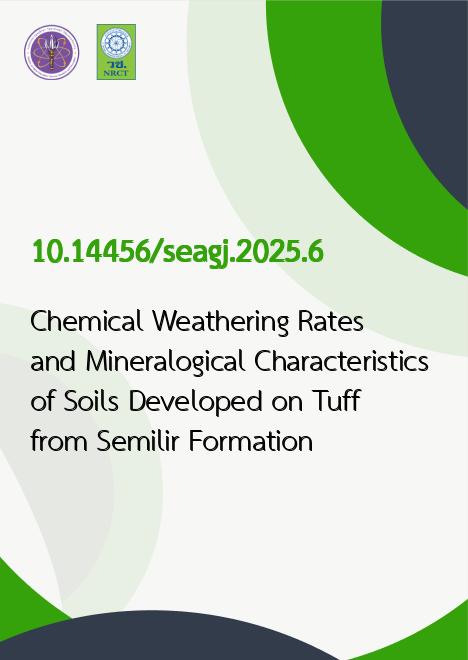
|
Chemical Weathering Rates and Mineralogical Characteristics of Soils Developed on Tuff from Semilir Formation |
|---|---|
| รหัสดีโอไอ | |
| Creator | Novi Asniar |
| Title | Chemical Weathering Rates and Mineralogical Characteristics of Soils Developed on Tuff from Semilir Formation |
| Contributor | Yusep M. Purwana, Niken S. Surjandari, Bambang Setiawan |
| Publisher | Southeast Asian Geotechnical Society |
| Publication Year | 2568 |
| Journal Title | Geotechnical Engineering Journal of SEAGS & AGSSEA |
| Journal Vol. | 56 |
| Journal No. | 6 |
| Page no. | 1-12 |
| Keyword | Chemichal Weathering Indices, Degree of Weathering, Mineralogy, Soil, Tropical, Tuff. |
| URL Website | https://seags.ait.asia/ |
| Website title | AGSSEA & SEAGS |
| ISSN | 0046-5828 |
| Abstract | The Semilir Formation is part of the southern mountainous zone south of central Java. This formation consists of tuff, lapily tuff, lapily pumice, pumice breccia, and shale. The thickness of this formation is more than 460 meters. Studies on the chemical and mineralogical properties of soil derived from the weathering of tuff rocks in the Semilir Formation have never been carried out. Twelve soil samples from different areas within the Semilir Formation were analyzed for their chemical and mineral properties. X-ray fluorescence (XRF) and X-ray diffraction (XRD) techniques were used for chemical and mineralogical analysis. The results of the XRF test will be used to calculate an efficient chemical weathering indices to assess the development of soil from the underlying rock. The XRD test results indicate that the dominant mineral contents in the samples are calcite, anorthite, quartz, mica, metahalloysite, and saponite. The chemical composition results show that the SiO2, Al2O3, and Fe2O3 content in the residual tuff soil increases with the degree of weathering while CaO decreases. Furthermore, MgO, Na2O, K2O, and TiO2 do not report a good correlation with the degree of weathering. This study demonstrated that, among the evaluated weathering indices, the Weathering Index of Parker (WIP), the Chemical Index of Alteration (CIA), the Chemical Weathering Index (CIW), and the Plagioclase Alteration Index (PIA) were the most proper indices for predicting tuff weathering intensity. CIW and CIA show very good correlations since CIW is a modified chemical weathering index from CIA; hence, the calculation of both indices shows similar results. WIP and CIA, WIP and CIW, and WIP and PIA also show good correlations. |
